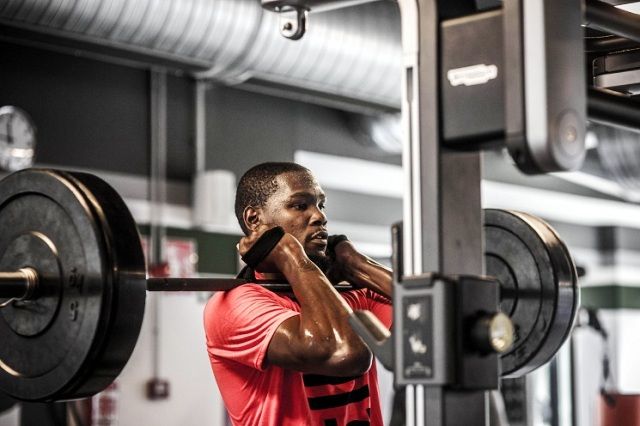Kevin Durant had suddenly become a national punch line. The unanimous First Team All-American and reigning NCAA Player of the Year suddenly had a few new labels attached to him: feeble, frail, delicate, weak.

At the NBA pre-draft Combine, the razor-thin Durant was the only prospect who failed to Bench Press 185 pounds, and experts across the country were quick to criticize. But the onslaught of media criticism only provided fuel to the intense competitive fire already burning within Durant. Fast forward to 2011, and KD—the All-NBA First Team selection, FIBA World Championship MVP and youngest scoring champion in NBA history—is the one who’s laughing now.

Durant’s ascension to NBA greatness is the product of unique genetic blessings and an insatiable desire for excellence. With a 6’9” frame and the wingspan of a pterodactyl, Durant possesses physical tools that had pro scouts drooling since he was a junior in high school. But it’s his obsessive work ethic that propelled him to elite status.
When Durant was 10 years old, his godfather had him write down a quote 300 times: “Hard work beats talent when talent fails to work hard.” Durant has lived by this mantra, always adding elements to his game and never being satisfied with what he has accomplished. As a young kid in Baltimore, Durant would spend his entire day at the local rec center, napping on a mattress in the gym while waiting for his grandmother to bring him meals. His lust for improvement continued when he reached the NBA, where Durant’s phenomenal performances on the court can be traced back to the work he puts in at Oklahoma City’s weight room.
Durant’s workout regimen, under the guidance of Thunder strength and conditioning coach Dwight Daub, is built around instability and proprioceptive [balance] training. Daub says an NBA court is an unstable environment—bodies constantly moving and colliding—and players often find themselves in awkward, off-balance positions. To excel and prevent injury, a player’s muscles must be adept at doing different things in different directions at the same time. With this in mind, Daub designed KD’s program with many single-leg, multi-directional movements, as well as complex adaptations of common exercises.
One combination exercise is the Single-Leg Dumbbell Curl-to-Press. Standing on one leg improves KD’s balance in unstable situations, while the Bicep Curl and Shoulder Press combination strengthens his upper body. During a game, you’ll see KD drive to the hoop, absorb contact with his upper body, and then launch a floater off one foot as he draws the foul. His ability to maintain his balance and convert this shot with a high percentage stems from the Curl-to-Press exercise.

Durant also performs several exercises intended to prevent injury in unstable conditions, such as the Med Ball Multi-Planar Lunge on a Core Board. The purpose of the Multi-Planar Lunge is to prepare Durant’s knees, hips and back for stressful game-time situations. Ideally, if KD is knocked off balance or gets tangled up on the court, he will be able to pull himself out of the situation without being injured.
Perhaps the toughest exercise in Durant’s routine is the Walking Dumbbell Push-Up-to-Row, an exercise that targets practically the entire upper body through the shoulders, lats and stabilization of the core. KD’s ability to score around the basket while absorbing contact can be attributed to this exercise.
At 22 years old, Durant has already accomplished more than most NBA players in their entire careers. But he is not satisfied. Durant’s physical talents and obsessive work ethic, along with Daub’s injury prevention exercises, ensure he will only get better as the years progress.
And that’s just downright scary.
Austin Green is a guest writer from the University of Montana, where he majors in journalism. Having played basketball his entire life, Green has dedicated himself to writing about the sport he loves.





